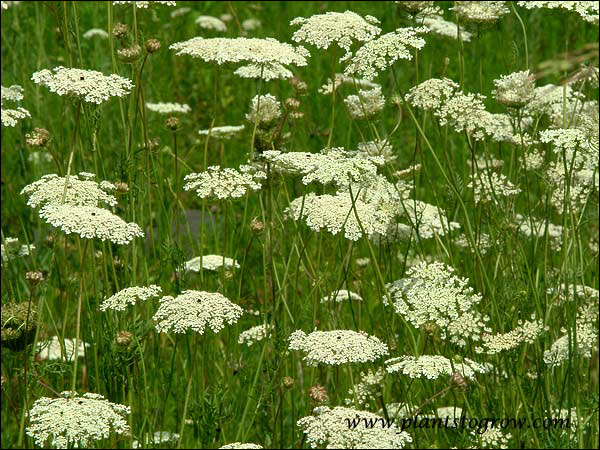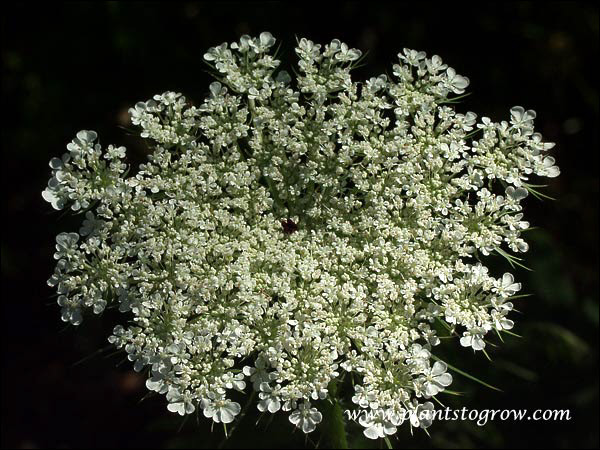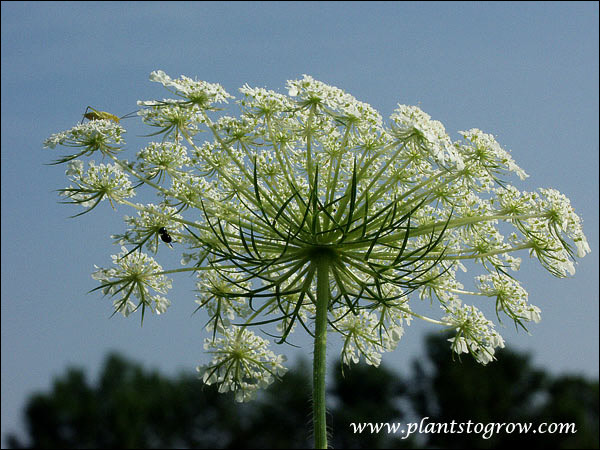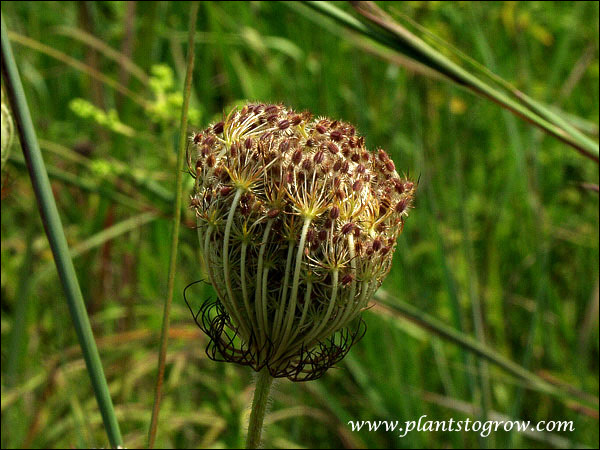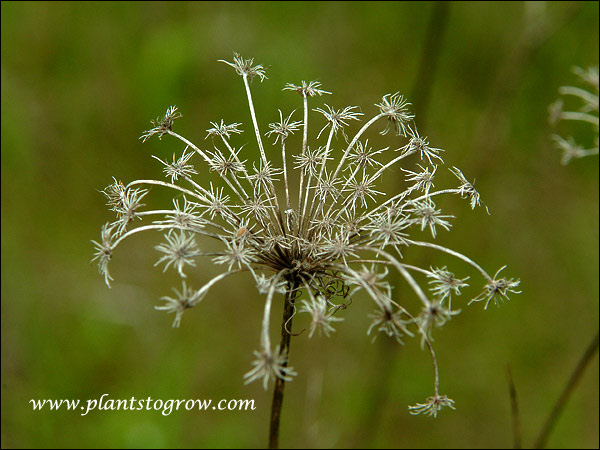| Description | Queen Ann's Lace (Daucus carota) Although regarded as a weed due to its aggressive growth, it remains a very attractive plant when in bloom. Flat, lacy white flowers appear at the top of the plant. It has naturalized in many different areas. |
|---|---|
| Plant Type | Weeds, Wild Flowers, Biennials |
| Sunlight | full |
| Moisture | average to dry |
| Soil & Site | average, disturbed areas, fields, roadsides |
| Flowers | Flat clusters of tiny white flowers called umbellets form the lacy umbel at the top of the plant. A black to purple floret can be found in the center. Green bracts underneath the umbel are deeply and narrowly lobed. The plant is a biennial and produces a prolific amount of seeds. The curled dry flower head is often called a bird’s nest. (#138) |
| Leaves | fern-like, bi or tripinnate |
| Stems | covered with hair |
| Roots | deep tap root |
| Dimensions | up to 3' |
| Propagation | In my Biology classes we would grow these from collected seed and they seemed to germinate readily with little or no special needs. But germination percentage was better with cold stratification. |
| Native Site | Europe |
| Misc Facts | The flowers are used in floral arrangements, along with the dried seed heads. The root can be dried, ground and use as a substitute for coffee. Daucus is from the Greek word dais, which means to burn. Probably because of its acid tasting roots. Carota comes from the word carrot. Queen Ann's Lace is named after Queen Ann of England (1702-1714) who liked to have lace on her dresses. According to legend the reddish central flowers are came from Queen Ann when she pricked her finger sowing (#138) An escaped plant from European flower beds. The Swallowtail Butterfly frequents this plant along with over 60 other insects. |
| Author's Notes | After working as a professional garden weeder for over 25 years, I consider Queen Ann's Lace to be one of my least concerns. I have pulled a few in my gardens. It can be found in the lawn forming flat rosettes of fern-like foliage. It is most common in disturbed areas but will quickly be crowded out by more aggressive plants. |
| Notes & Reference | #7- Newcomb's Wildflower Guide (Newcomb), #14-Hedge maids and Fairy Candles (Jack Sanders), #41-Wildflowers of Wisconsin ( Stan Tekiela), #138-Parsleys, Fennels and Queen Ann's Lace (Barbara Perry Lawton) |

Cart

